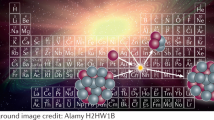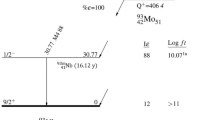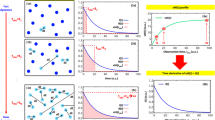Abstract
WHEN uranium or thorium is bombarded with neutrons, a number of radioactive bodies are formed with periods ranging from a few seconds to several days. The decay of this assembly of fission products (not chemically separated) has been studied by Bjerge, Brostrøm and Koch1 and found to be practically the same for thorium and uranium. They have pointed out that this may be due partly to the fact2 that some of the fission products are the same for uranium and thorium but that, apart from this, the large number of periods would tend to wipe out any individual features of the decay curve.
This is a preview of subscription content, access via your institution
Access options
Subscribe to this journal
Receive 51 print issues and online access
$199.00 per year
only $3.90 per issue
Buy this article
- Purchase on Springer Link
- Instant access to full article PDF
Prices may be subject to local taxes which are calculated during checkout
Similar content being viewed by others
References
Bjerge, Brostrøm and Koch, NATURE [143, 794 (1939)].
Hahn and Strassmann, Naturwiss., 27, 89 (1939). Aten, Bakker and Heyn, NATURE, 143, 679 (1939).
Author information
Authors and Affiliations
Rights and permissions
About this article
Cite this article
FRISCH, O. Statistical Calculation of Composite Decay Curves. Nature 143, 852–853 (1939). https://doi.org/10.1038/143852b0
Issue Date:
DOI: https://doi.org/10.1038/143852b0
This article is cited by
-
Fission of Uranium and Thorium under Deuteron Bombardment
Nature (1940)
-
La scissione dei nuclei pesanti
Il Nuovo Cimento (1939)
-
Zur Frage nach der Existenz der ?Trans-Urane?
Die Naturwissenschaften (1939)
Comments
By submitting a comment you agree to abide by our Terms and Community Guidelines. If you find something abusive or that does not comply with our terms or guidelines please flag it as inappropriate.



